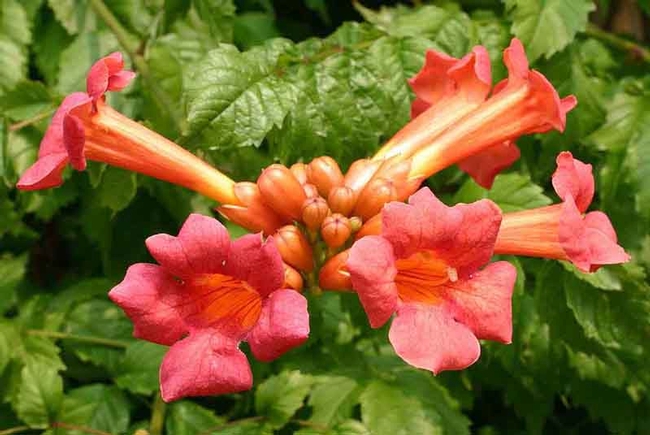The Day My Angel's Trumpet Began A Hollerin'
By Andrea Peck
It's amazing what a plant can do.
One weekend, about a year ago, I saw a relatively large angel trumpet (brugmansia) plant at a yard sale.
I tried to walk on by. But those flowers brought me to an immediate and full halt.
It was $40.00, which is kind of expensive in the world of yard sales. Nevertheless, it hardly took me a minute to decide. Most of that minute was spent rehearsing a legitimate excuse to my husband. The plant was lush with beautiful green leaves. It stood at about 3 feet tall and had striking pink drooping flowers. It even smelled good.
I tried haggling, but the woman was savvy and my plant lust was just contained enough to prevent obvious drooling. She would not lower the price.
I had to come back with my two kids and the car and of course, my money. I loaded the plant into the front seat of my car nearly smashing it in the process. When I arrived home I placed my expensive new purchase right outside my front door.
You have to know my house. It's small and I think, cute. But, it is lacking a certain finesse. For example, if you walk in the front door and keep walking, you will walk out the back door.
It is a forthright home.
The angel trumpet plant suddenly gave it a bit of mystery. Not a lot, mind you. For that, it would need reconstructive surgery, but just enough to be coy. The perfunctory front door now took on an air of an entrance. I no longer felt that exiting my car was within the same motion as walking into the house.
Even though the plant was not huge, it led you to the door. It beckoned.
My new plant and I got along swimmingly for a few months. I was obviously grateful, she was obviously lovely. It was a balanced relationship. Until the day my beauty began showing signs of distress. It began with a slow stippling effect on the leaves. Then the healthy green leaves metamorphosed into yellow and green. Many of the leaves simply turned brown and dropped.
I noticed my angel's trumpet had a gray cast.
Huh? Grayish?
What does that mean, exactly?
As bad became worse I began to suspect a plant disorder. I suspected spider mites, to tell you the truth. But I had never experienced mites firsthand and I did not see any crawly creatures on the plant, try as I might, to locate a tell-tale offender. I kind of wanted to ignore the whole thing and hope for a flower, but things took a steep decline. In a state of panic, I googled spider mites and there the little buggers were! Right there in high definition I saw the glazed, spotted leaf that was the mirror image of what lay outside my abode.
I careened onto the Master Gardener Website and found a helpful guide. It turns out that spider mites are common in the garden. They are also super tiny and hard to spot. Mites thrive in hot, dusty conditions. A plant that is water stressed is especially susceptible.
Treatment for mild cases is not painful. Mite prevention begins with proper irrigation. Mites are soft bodied, so a sharp spray of water will often damage or kill those that have made your plant its home. Broad-spectrum insecticides that treat a general variety of pests are best avoided as they often have the opposite effect on mites.
In the event that a small creeper of any variety has moved into your garden, I've attached a link to the Master Gardener Pest Notes Library. http://www.ipm.ucdavis.edu/PMG/PESTNOTES/index.html
